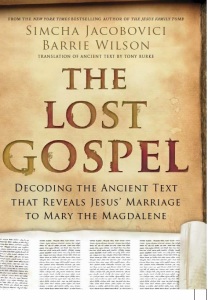Finding Jesus Episode 1: Giving in to the Apocryphal Urge
Last Sunday night, I tuned in, along with over a million other viewers, to the first episode of CNN’s six-part series Finding Jesus: Faith, Fact, Forgery. The series seeks to answer questions about the life and death of Jesus using evidence from artifacts—some textual (the Gospel of Judas) some not (the bones of John the Baptist). This first episode focused on the Shroud of Turin as possible evidence for Jesus’ death—indeed perhaps also his resurrection, given the Shroud’s apparent miraculous qualities. My interest in the episode is in how it demonstrates the apocryphal urge—meaning, the temptation to retell stories from early Christian texts, thereby harmonizing disparate accounts and adding new details until a new account is created, sometimes even supplanting the original stories in the minds of readers (or viewers).
 Of course, not all apocryphal texts work this way; some contain entirely new material. But some of the most well-known apocrypha do repurpose and enhance older works, such as the Protevangelium of James’ use of the infancy narratives in Matthew and Luke or the Gospel of Peter’s combination of elements from all four canonical passion narratives. The example of the Gospel of Peter is particularly useful here because, in its dramatic re-enactments of the suffering and death of Jesus and its commentary by participating scholars, authors, and theologians, Finding Jesus has created, perhaps unwittingly, a new account of the Passion that undiscerning viewers may think is biblically accurate but instead contains numerous elements not found in …
Of course, not all apocryphal texts work this way; some contain entirely new material. But some of the most well-known apocrypha do repurpose and enhance older works, such as the Protevangelium of James’ use of the infancy narratives in Matthew and Luke or the Gospel of Peter’s combination of elements from all four canonical passion narratives. The example of the Gospel of Peter is particularly useful here because, in its dramatic re-enactments of the suffering and death of Jesus and its commentary by participating scholars, authors, and theologians, Finding Jesus has created, perhaps unwittingly, a new account of the Passion that undiscerning viewers may think is biblically accurate but instead contains numerous elements not found in …

